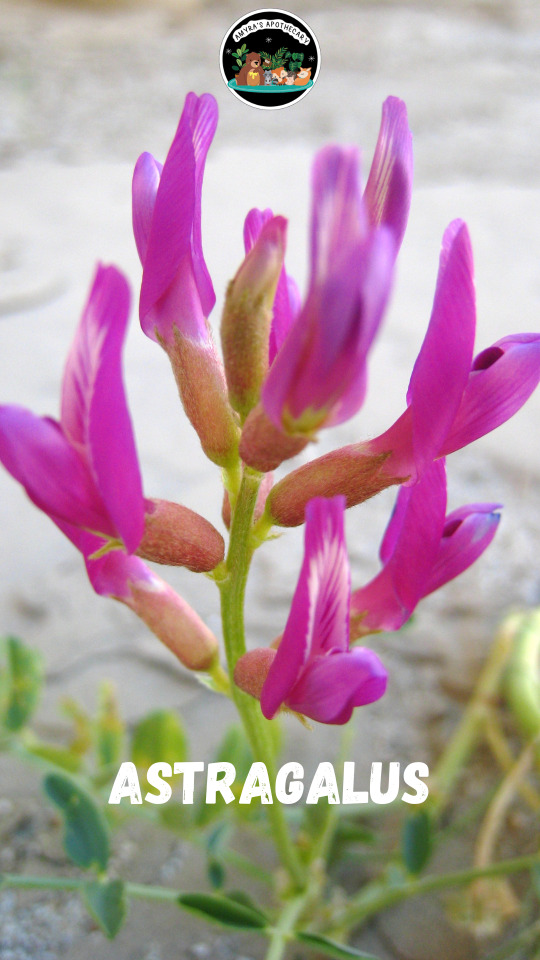#anti aging treatment in India
Text
Affordable Hair Fall Therapy in Delhi NCR
Improve your hair density and get voluminous hair with the help of our affordable hair fall therapy in Delhi NCR. Get your hair condition examined from our experts to provide you a safe and effective hair treatment. Our hair therapy is painless and has minimal side effects which takes place under the surveillance of our experts. Contact us to learn more.
#anti aging treatment in India#best anti aging treatment in India#best dermatologist in Ghaziabad#best hair fall treatment in Ghaziabad#Best Hair Transplant Clinic in Ghaziabad#Best Hair Transplant Surgeon#best skin specialist doctor in Ghaziabad#dermal fillers treatment in ghaziabad#hair transplant surgeon in Ghaziabad#laser hair removal cost in Ghaziabad#laser hair reduction in Ghaziabad#laser tattoo removal in Ghaziabad#laser tattoo removal in NCR#tattoo removal cost#skin care clinic Ghaziabad#skin specialist in Ghaziabad#top 10 skin specialists in Ghaziabad
0 notes
Link
0 notes
Text
Explore a range of top-quality anti-ageing products conveniently from the comfort of your home. Buy anti-ageing products online in India with Phimedy for effective skincare solutions tailored to combat signs of ageing and enhance your skin's vitality.
#buy anti ageing products#buy anti ageing serum india#anti ageing creams online#Phimedy#cosmetics#skincare tips#anti ageing skincare#anti aging#anti ageing treatment
2 notes
·
View notes
Text

🌟 Lowest Cost Stem Cell Therapy for Anti-Aging in India 🌟
Looking to turn back the clock? Stem cell therapy for anti-aging in India is revolutionizing the way we approach aging! This cutting-edge treatment helps rejuvenate skin, improve vitality, and slow the aging process—giving you a youthful glow and renewed energy. 🌿
#anti aging#stem cell therapy#Anti-Aging Treatment#Anti-Aging Treatment in India#Stem Cell Treatment for Anti-Aging#stem cell center India
0 notes
Text

Add skincare products that have plant-based stem cells. It will help with renewing cells, anti-aging, hydrating and brightening skin, and also protect against environmental damage.
#best skin care products#best skin care products for dry skin#best skin care products for oily skin#best skin care products in india#skin care products for men#skin care products for oily skin#skin care products for women#acne#beauty#skincare#anti ageing skincare#anti ageing treatment#anti ageing cream#rejuvenating facial cream
0 notes
Text

Is Stem Cell Therapy for Anti-Aging Beneficial in India?
Discover the power of stem cell therapy for anti-aging in India! 🌿 This innovative treatment can rejuvenate your skin, boost energy levels, and enhance overall vitality. Experience the benefits of cutting-edge science to look and feel younger! 🌟
To learn more about how stem cell therapy can transform your aging journey and improve your quality of life. Don't miss out on this age-defying opportunity! ✨
#Stem cell therapy for Anti-Aging#Anti-Aging Stem Cell Treatment#Low Cost Anti-Aging Treatment in India#Stem Cell Treatment for Anti-Aging in India#Anti-Aging Treatment Cost in India#Anti-Aging Stem Cell Therapy Cost in India#Stem Cell Therapy Anti-Aging success rate#Best Hospital for Anti-Aging Stem Cell Treatment in India
0 notes
Text
Chelation Therapy
Chelation is the treatment to eliminate the accumulated toxins from heavy metal poisoning. A build-up of heavy metals like lead, mercury, arsenic, cadmium,etc. has an adverse effect on the blood vessels in our body. This novel treatment binds the chelators to heavy metals in our bloodstream and helps reduce stress and plaque accumulation. Plaque formation is dangerous as it thickens the blood vessels, which, in turn, decreases the amount of blood flow. Chelation has other benefits as well. It reduces high blood pressure, arteriosclerosis, etc. and is also known for curing diabetes, Alzheimer’s disease, severe headaches, autism, etc.
Heavy Metals – the Silent Killer
Heavy or high-density metals are everywhere around us. They are present in the food we eat, the water we drink, the air we breathe in, and the day-to-day products we use. In this age of technology, we are batting environmental hazards every day, struggling to keep pollution levels in check. Heavy metal poisoning occurs when traces of these minuscule atoms exceed the acceptable level mark in our body. These metals can cause or aggravate chronic diseases and even cancer.
The Importance & Process
Chelation therapy is said to treat several other diseases as well. But extensive medical research has established the fact that it is an important treatment to revitalize your body. Not only the pollutants that affect everything we need to live on this earth, but our sedentary lifestyle has also exposed us to several health risks. In addition to that, many of us indulge in bad habits like smoking. In this cut-throat competitive environment, stress is said to affect more than 75 % of the population in the world. These pollutants, chemicals, and bad habits stimulate the formation of free radicals that are known for damaging cellular components. Thus, such a trailblazing medical treatment like chelation therapy is gaining more and more importance each and every passing day.
Chelation usually involves the intravenous administration of ethylenediaminetetraacetic acid (EDTA) for treating the impaired blood vessels. Other common chelators include dimercaptosuccinic acid and dimercaprol.
#eecp therapy in bangalore#Weight Loss Infusion#colon hydrotherapy in bangalore#NAD - Anti-Ageing Infusion#stem cells treatment in india
0 notes
Text
Reveal Your Bollywood Glow: Unveiling Celebrity-Inspired Skincare Secrets.


This blog is going to be all about Indian & bollywood inspired products and skincare tips. If you also want a blog separately about Indian natural and authentic skincare or hair care I'll surely make it. 🫶
Know Your Skin Type : Identify your skin type - whether it's oily, dry, combination, or sensitive - to tailor your skincare routine effectively.
Cleanse Like a Star : Use a gentle cleanser like Cetaphil or Neutrogena to remove dirt and makeup and a oil cleaner is a must if you wear makeup daily. Opt for micellar water for a quick and effective cleanse on busy days. (But I don't really recommend it).
Exfoliate for Radiance : Incorporate a mild exfoliator like St. Ives Apricot Scrub or The Body Shop's Vitamin C Glow-Revealing Liquid Peel to slough off dead skin cells and reveal glowing skin. And my personal favorite coffee scrub from The Bombay shaving company. Don't exfoliate more than twice a week.
Hydration Is Key : Use a hydrating toner such as Clinique Moisture Surge Face Spray for an instant boost of hydration or toner + mist from pilgrim works like magic (my fav 😭).
Targeted Treatments : Include a serum with ingredients like hyaluronic acid (for hydration) or vitamin C (for hyperpigmentation) if you are under 17 or 18 like me don't use vitamin c or if you want to use in very less %, I use 2% kojic acid for my uneven skin tone from pilgrim, it's very begniner friendly. (Always consult a dermatologist for your skincare don't go around seeing videos on insta and YouTube believing them). I recommend Minimalist if you want chemical bases serums.
If you are above 23 or 25 Incorporate a retinol-based cream like RoC Retinol Correxion Deep Wrinkle Night Cream for anti-aging benefits. (Got this tip from mumma for y'all 😭✨️)
Sun Protection Essentials : Always apply a broad-spectrum sunscreen with SPF 30 or higher, such as La Roche-Posay Anthelios Ultra Light Fluid, to protect your skin from harmful UV rays. More affordable and effective sunscreens from brands — dot and key, aqualogica, Dr. Seth and wish care.
Overnight Nourishment: Use a hydrating overnight mask like Laneige Water Sleeping Mask to replenish moisture while you sleep. Incorporate a facial oil like The Ordinary's Rose Hip Seed Oil for added nourishment and radiance.
DIY Treatments Inspired by Bollywood:
- Try a turmeric, gram flour and yogurt face mask inspired by Priyanka Chopra for glowing skin.
- Use aloe vera gel like Deepika Padukone for its soothing and hydrating properties. (MY fav bolly actress btw 😭❤️)
Lifestyle Tips for Healthy Skin : Stay hydrated by drinking plenty of water throughout the day people are not stupid that they are going around telling you to drink water, IT'S A MUST!. Incorporate antioxidant-rich foods like fruits, vegetables, and green tea into your diet for overall skin health.
Some of my fav brands (mostly available in india) : dot and key, Foxtale, pilgrim, minimalist, st. Botanica, organic harvest and aqualogica!
Fav brand released by a bollywood actress: Hyphen by Kriti Sanon, their lip balm can even beat Rhode's lip balm istg- and their sunscreen 🔛🔝.
Channel your inner Bollywood diva and achieve a radiant, flawless skin with these skincare tips and product recommendations. Let your skin glow like a star!
#desi#desi tumblr#india#girlblogging#indian#beacoming that girl#desiblr#advice#it girl#this is a girlblog#self care#skincare#self care tips#self love#glow up#bollywood#indian aesthetic#wonyoungism#self growth#self grooming#positivity#positive suggestions#deepika padukone#aishwarya rai#it girl energy#girly#desi stuff#desi things#desi core#desi girl
56 notes
·
View notes
Text
Choosing the Right Gastrointestinal Tract Drug – Factors to Consider
The gastrointestinal (GI) tract is a complex system responsible for digestion and absorption of nutrients. Given its critical function, disorders affecting the GI tract can significantly impact overall health and quality of life. Selecting the right medication to treat these conditions is essential for effective management and recovery. Centurion HealthCare, a leading gastrointestinal tract drugs supplier in India, offers a range of high-quality medications designed to address various GI disorders. In this article, we will explore the factors to consider when choosing the right gastrointestinal tract drug, and why Centurion HealthCare stands out in the best pharmaceutical industry in India.

Understanding Gastrointestinal Tract Disorders
GI tract disorders encompass a wide range of conditions affecting different parts of the digestive system, including the esophagus, stomach, intestines, liver, pancreas, and gallbladder. Common GI disorders include:
Gastroesophageal Reflux Disease (GERD)
Peptic Ulcer Disease
Irritable Bowel Syndrome (IBS)
Inflammatory Bowel Disease (IBD)
Hepatitis
Pancreatitis
Each condition requires specific treatment strategies and medications to manage symptoms, promote healing, and prevent complications.
Factors to Consider When Choosing a Gastrointestinal Tract Drug
Choosing the right drug for treating GI disorders involves multiple factors, including the specific condition, the patient’s medical history, and potential side effects. Here are key considerations:
1. Accurate Diagnosis
An accurate diagnosis is the first step in selecting the appropriate medication. Physicians use various diagnostic tools such as endoscopy, colonoscopy, imaging studies, and laboratory tests to identify the specific GI disorder. Understanding the underlying cause and severity of the condition is crucial for effective treatment.
2. Mechanism of Action
Different gastrointestinal tract drugs work through various mechanisms to achieve therapeutic effects. Understanding how a drug works helps in selecting the most suitable option. Common mechanisms include:
Antacids: Neutralize stomach acid, providing quick relief from heartburn and indigestion.
Proton Pump Inhibitors (PPIs): Reduce the production of stomach acid, effective in treating GERD and peptic ulcers.
H2 Receptor Antagonists: Decrease acid production by blocking histamine receptors in the stomach lining.
Prokinetics: Enhance gut motility, useful in conditions like gastroparesis.
Antispasmodics: Relieve intestinal cramps and spasms, often used in IBS treatment.
Anti-inflammatory Drugs: Reduce inflammation in the GI tract, essential for managing IBD.
3. Efficacy and Safety
The efficacy and safety profile of a drug are critical factors in the decision-making process. Clinical trials and real-world studies provide valuable information on a drug’s effectiveness and potential side effects. Physicians must weigh the benefits against the risks to ensure the chosen medication offers the best possible outcome for the patient.
4. Patient-Specific Factors
Each patient is unique, and various individual factors can influence drug selection. These include:
Age: Certain drugs may be more suitable for children, adults, or the elderly.
Medical History: Pre-existing conditions, such as kidney or liver disease, can affect drug metabolism and tolerance.
Allergies: Patients with known drug allergies must avoid medications that could trigger adverse reactions.
Concurrent Medications: Drug interactions can impact efficacy and safety, requiring careful consideration of all medications the patient is currently taking.
5. Route of Administration
The route of administration can affect the drug’s efficacy and patient compliance. Common routes for GI drugs include:
Oral: Tablets, capsules, and liquids are convenient for most patients.
Intravenous: Used in severe cases or when oral administration is not feasible.
Topical: Suppositories and enemas are used for localized treatment in the lower GI tract.
6. Cost and Availability
Cost can be a significant factor, especially for long-term treatments. Generic versions of drugs often offer the same efficacy as brand-name medications at a lower cost. Availability of the drug in the local market is also crucial to ensure uninterrupted treatment.
Centurion HealthCare: Leading the Way in GI Tract Drug Supply
Centurion HealthCare has established itself as a premier gastrointestinal tract drugs supplier in India, renowned for its commitment to quality, innovation, and patient care. Here’s why Centurion HealthCare is a trusted name in the best pharmaceutical industry in India:
1. Comprehensive Product Range
Centurion HealthCare offers a wide range of gastrointestinal tract drugs, catering to various GI disorders. Their product portfolio includes antacids, PPIs, H2 receptor antagonists, prokinetics, antispasmodics, and anti-inflammatory medications, ensuring comprehensive treatment options for healthcare providers.
2. Quality Assurance
Quality is at the heart of Centurion HealthCare’s operations. The company adheres to stringent quality control measures, from raw material sourcing to final product testing, ensuring that every medication meets international standards for safety and efficacy.
3. Research and Development
Centurion HealthCare invests heavily in research and development to stay at the forefront of pharmaceutical innovation. Their R&D team continuously works on developing new formulations and improving existing products to address emerging healthcare needs.
4. Patient-Centric Approach
Understanding that each patient is unique, Centurion HealthCare adopts a patient-centric approach in drug development and supply. Their medications are designed to provide maximum therapeutic benefit with minimal side effects, enhancing patient outcomes and quality of life.
5. Global Reach
As a leading gastrointestinal tract drugs supplier, Centurion HealthCare has a robust distribution network that ensures their products are available not only across India but also in international markets. Their commitment to excellence has earned them a reputation as a reliable partner for healthcare providers worldwide.
6. Affordability
Centurion HealthCare is dedicated to making high-quality medications accessible to all. Their cost-effective solutions, including generic versions of popular GI drugs, help reduce the financial burden on patients while maintaining high standards of care.
Conclusion
Choosing the right gastrointestinal tract drug involves careful consideration of various factors, including accurate diagnosis, mechanism of action, efficacy, safety, patient-specific factors, route of administration, and cost. Centurion HealthCare, as a leading gastrointestinal tract drugs supplier in India, excels in providing high-quality, effective medications that cater to the diverse needs of patients with GI disorders.
With a commitment to quality, innovation, and patient-centric care, Centurion HealthCare stands out in the best pharmaceutical industry in India. Their comprehensive product range, stringent quality assurance, advanced R&D, global reach, and affordability make them a trusted partner for healthcare providers seeking reliable solutions for GI tract disorders.
By choosing Centurion HealthCare, you can be confident in the quality and efficacy of the medications you are prescribing or consuming, ensuring the best possible outcomes for gastrointestinal health.
#Best Indian pharma industry 2024#Best pharmaceutical industry in India#Gastrointestinal tract drugs supplier#Gastrointestinal tract drugs supplier in India
3 notes
·
View notes
Text
This morning I saw Neil Gaiman's post on the passing of folk revivalist Melanie (may she RIP), and in listening to her music, I was pulled into re-reading the Woodstock wiki page, where she was one of only three solo acts by a woman. As an aging anarchist, I find everything about the hippie movement devastating and beautiful and sad. So much of my own activism is built on the knowledge that came out of their leftist struggles and failures. These are not the hippies of 1990's TV, with their neutered anti-nukes peace sign and stoner tropes, but the brilliant movement that brought us seismic cultural shifts, media like Harold and Maude and Sesame Street, and the modern music festival.
Woodstock was kind of silly--it only happened as it did because the organizers had to choose between building a stage or having fences, and they decided on the former. But when you subtract all the people that were there just to get laid or for a good time, you still have tens of thousands of political idealists. It was four days of logistical chaos for 450,000 people, but little mention has come out of it of fighting or sexual assault. I'm not trying to goldwash it--those things happened. Melanie was one of only three women allowed on that stage by themselves. But Woodstock still existed with a clear sense of meaning and hope, and the individuals there seemed to carry that with them.
In 2010, I spent three days at an Earthdance festival and was horrified at how misogynist it felt. The man who paid for my ticket cried because I wouldn't sleep with him. Someone told yelled 'cute girl you got there' at him as I tried to practice my guitar. In the final act of the festival, India Arie threw off her wig as she declared 'I am Not My Hair,' affirming her right to exist in the moment, however she saw fit. I wished for her sense of confidence, to be me and be there, but it didn't matter. I still wanted to be anywhere else.
I have to remind myself that things like this happened at Woodstock. But at Earthdance, I was 22, a feminist armed with the words to describe my poor treatment and, most importantly, jaded. Earthdance seemed to have no real agenda outside of getting high and listening to music. This is fine to do, but that it was cloaked in some antiquated idea of 'peace' infuriated me. Peace meant a lot of things, but it wasn't this limpid "pacifism" of filling the air with the wet hay smell of marijuana smoke and calling it good.
Around that same time, I read how Millenials were 'optimistic' as a generation. It sounded similar to how those starry-eyed hippies felt in the summer of 1969. I wanted that for myself, to look to the future and feel hope. Fifteen years after reading about optimistic Millenials, I can't remember any of that optimism, only the slog of watching nuanced political concepts turn into undefined sludge online before a full appropriation by ad-makers. Pair that with the inane, incessant leftist internet infighting, and its almost enough to call it a day. How much more political dissatisfaction would have happened if the hippies had internet in 1970?
I don't have a good wrap-up for this. (I'm writing this instead of journaling this morning, and my journal entries usually also have no good conclusion.) Maybe it's that I have to pull from the joy people still feel towards the hippy movement. That I want to make activism and art in my life that reflects those levels of joy, of longevity, of a desire for a better world, and to remember this era as fondly as I can. As one youtube commenter said: "The hippy in me will never die. What a great time to be alive."
2 notes
·
View notes
Text
The A-list of Herbs
1. Aloe Vera
Aloe is a common houseplant and outdoor succulent. It’s most commonly used fresh off the plant so it helps to have some growing at home. It effectively treats minor skin issues such as psoriasis, dandruff, small cuts, and minor burns, including sunburn. It can also potentially help prevent skin damage from UV radiation and other forms of radiation such as cancer treatments.
2. Angelica
Used as a medicinal plant since medieval times, Angelica is a common garden perennial. It ails various medical ailments such as malaria, anemia, fever, and arthritis, heartburn, flatulence, and anxiety. The most common ways to use this medicinal plant is either as an herbal tea or a salve.
3. Arnica
Arnica flowers that are used for medicinal purposes, so collect them as soon as they bloom, giving them plenty of time to air dry. When used topically, it heals bruises, sprains, muscle aches, and joint pain. Some studies show that arnica might be a useful treatment for minor burns. The only safe way to use arnica is topical.
4. Ashwagandha
Native to India and Nepal, they grow in backyards easily. Studies show that this ancient herb improves cognitive function and helps regain memory loss. It has anti-inflammatory properties that make it helpful in treating arthritis, and is useful in treating neurodegenerative diseases, like Alzheimer’s.
5. Astragalus
Astragalus is a herbaceous perennial native to China. Studies show that it may protect the body from cancer and diabetes, has strong anti-aging properties, protects and supports the immune system, and helps lower blood pressure.






#flowers#herbs#naturecore#spring#cottagecore#wellness#green witch#plants#wellbeing#photographers on tumblr
2 notes
·
View notes
Text
PAMPER YOUR SKIN BY GETTING HELP FROM A DERMATOLOGIST
Skincare products are growing along with the rise in skin problems. New skin care products are periodically brought to the market. Every other skincare brand is introducing new product categories and making claims about various advantages. Yet, employing goods containing various active components without the necessary expertise might be risky and ineffective. There are skin specialists that are experts in the field of skin problems and can advise you on the most appropriate therapies for your skin problems. Visit the top skin specialist in Ghaziabad to obtain a practical and effective remedy for your skin problem.

Having a solid skincare routine is crucial for managing any skin issue, including active acne and skin aging. It is often said, prevention is always preferable to treatment. Any skin problem can be handled and treatment is not necessary if one begins practicing healthy skin care habits in the early stages of a skin condition or at a young age. Hence, after contacting a dermatologist, treat your skin with the best products for your skin type.
It is crucial to get treatment for severe skin conditions as soon as possible to prevent further aggravation. Many contemporary methods have been developed to offer a happy and cozy experience. Your doctor will be able to advise you on the most effective course of therapy if you are dealing with skin conditions like acne, psoriasis, or eczema. This can involve using a particular cream or ointment or a prescription drug.

Experts can offer guidance on safeguarding your skin from the sun and other potentially damaging environmental elements. This includes using a humidifier in the winter to prevent dry skin, wearing sunscreen every day, and refraining from using tanning beds.
We, HLH Dermatologica are a one-stop shop for all skin issues, including vitiligo, aging pigmentation, dark circles under the eyes, baby skin illness, and vitiligo scars. Although getting older is unavoidable, there are treatments available to halt or regulate skin aging. As one of the most popular anti aging treatment clinic, we provide a variety of skin aging treatments. Depending on your skin's state, you can pick from anti-aging techniques like chemical peeling, fillers, the vampire facelift, and the Derma roller. The scars, wrinkles, and fine lines that develop with aging can be significantly reduced with the use of various skin fillers.
Dermal fillers are one of the most popular and widely used methods, and we offer the best dermal fillers treatment in ghaziabad utilizing our customized procedure. The two most popular fillers are hyaluronic acid (Restylane, Juvéderm) and calcium hydroxyl apatite (Radiesse). They are the most favored since they function rapidly and endure for around 9 months.
Nobody wants undesired body hair since it makes it difficult to wear clothing with skin-baring sleeves and makes your skin appear drab and worn out. Body hair is another typical problem. Routine waxing can be painful and does not remove unwanted hair permanently. After enduring the uncomfortable waxing procedure, one must return a few days later. Choose a healthy and long-lasting solution instead of waxing, which is bad for the health of your skin and can lead to ingrown hair issues. We employ a fully furnished lab with contemporary equipment and offer a low cost for laser hair removal cost in Ghaziabad. Our professionals take every precaution and guarantee full hygiene. Make an appointment right away to receive treatment from our professionals.
#affordable hair fall therapy in Delhi NCR#anti aging treatment clinic#anti aging treatment in India#best anti aging treatment in India#best dermatologist in Ghaziabad#best hair fall treatment in Ghaziabad#Best Hair Transplant Clinic in Ghaziabad#Best Hair Transplant Surgeon#best laser hair removal doctor in Ghaziabad#best skin specialist doctor in Ghaziabad#dermal fillers treatment in ghaziabad#hair transplant surgeon in Ghaziabad#laser hair reduction in Ghaziabad#laser hair removal cost in Ghaziabad#laser tattoo removal in Ghaziabad#laser tattoo removal in NCR#tattoo removal cost#skin care clinic Ghaziabad#skin specialist in Ghaziabad#top 10 skin specialists in Ghaziabad
0 notes
Text
anti aging treatment, Anti wrinkle treatment, Botox & filler, botox cost in India, botox treatment cost in India
#anti aging treatment#Anti wrinkle treatment#Botox & filler#botox cost in India#botox treatment cost in India
0 notes
Text
When my friend Lakshminarayana Ganti, an operations management and cybersecurity specialist from India, texted me this year to let me know that the U.S. Department of Homeland Security (DHS) had “lost” the $1,225 check his lawyer had submitted as payment for processing his green card application, I wasn’t especially shocked. Such incompetence is commonplace in U.S. immigration bureaucracy, and most immigrants to the United States have experienced or heard of similar treatment.
The resulting delay though meant that his eligibility for a green card lapsed—the official term is “retrogressed”—and he could now be looking at another year or more before he can reapply. He has already been waiting nearly 10 years. Travel outside the country is severely restricted for green card applicants; he will miss the overseas wedding next February of his nephew, his only close relative currently living in the United States. Both he and his employer, a data management company in Washington, will face thousands of dollars in additional legal expenses to renew his work permit and refile applications.
Ganti has a great deal of company these days. At the end of 2021, there were 1.4 million immigrants on temporary visas working in the country and waiting for the U.S. government to issue them green cards that will finally give them permanent residence and a path to citizenship. David Bier, an immigration expert at the Cato Institute, calculates that the backlog is now so long that more than 200,000 eligible people could die without ever receiving their green card. Some 90,000 children of people in the backlog will “age out”—turning 21 years old without the permanent status in the United States that they would have gained if a parent had received a green card, at which point they must either leave the country, marry a U.S. citizen, or remain as an unauthorized immigrant. More than 80 percent of those caught in the backlog are from India.
The story about the costs and dysfunction of the United States’ ridiculous immigration system has and should be told—again and again. The United States is relying on its engineering and science talent to stay ahead of China in what has become an existential struggle to lead in the industries of the future, from artificial intelligence to green energy to bioengineering. At U.S. universities, international students make up 74 percent of graduate electrical engineering students, 72 percent of computer and information science students, and half or more students in pharmaceutical sciences, mathematics, and statistics. Foreign students who settled in the United States now head flagship high-technology companies, including Microsoft CEO Satya Nadella, Alphabet CEO Sundar Pichai, IBM CEO Arvind Krishna, and Nvidia CEO Jensen Huang. The obstacles thrown up by the immigration system are a growing economic and national security risk to the United States.
The short version of how the current immigration debacle unfolded is that due to partisan differences between Republicans and Democrats over immigration—which are deeper today than ever before—the U.S. Congress has not revised immigration quotas since 1965, when the U.S. population was almost 140 million people smaller. Nor has Congress revisited the rules for highly educated immigrants since 1990—which was before the U.S. information technology sector created millions of new jobs in technical fields that have attracted so many immigrant scientists and engineers. Reforming immigration has been difficult enough. But with the Republicans—who have become an openly anti-immigrant party under the influence of former U.S. President Donald Trump—likely to retake at least the House of Representatives in next month’s midterm elections, prospects for reform will be even dimmer over the next two years.
These antiquated laws impose arbitrary caps on the number of green cards that can be issued each year to nationals of any single country, which hits populous countries the hardest. Under the 1965 law, no more than 7 percent of the 140,000 employment-based green cards issued each year can be given to citizens of any one country. The backlog depends on demand, and a surge in applications can push back waiting times. Currently, the U.S. government is only processing employment-based green card applications for Indians with at least a bachelor’s degree—known as the EB-2 category—if they filed their application before April 1, 2012. Ganti’s “priority date” is July 25, 2013; if the Department of Homeland Security had not lost his application check, then he would have had his green card before the date retrogressed.
There is also a more personal story about the Kafkaesque horrors of the way the United States mistreats its immigrants—those, to be clear, who are following all the rules and behaving exactly as the U.S. government has asked them to. Most come initially as foreign students, and from the first day they arrive, they are expected to navigate a bureaucratic system of almost unimaginable complexity, with the penalty for even one small mistake potentially being the loss of their education, jobs, families, and friends—as well as their removal to a country they left years or even decades before. Immigrants awaiting green cards are forced to make personal decisions about which jobs to take, whether to buy property, and whether to marry—always with a nagging dread that the U.S. government could rip it all apart in an instant. Leaving an unpleasant or underpaid job is difficult because they risk losing their spot in the coveted green card queue. What the government does to immigrants is immensely cruel to people who want nothing more than to build good lives in the United States and are following the rules to do so.
In many ways, immigration to the United States has become an elaborate scheme of bait and switch. U.S. universities are only too happy to receive large tuition checks from foreign students, who often come from wealthy families or are otherwise ineligible for financial aid. U.S. companies are happy to hire them on temporary work visas, of which the most common is the H-1B visa for university graduates. But having invited them in, the government then makes it impossible for many to live any semblance of a normal life. As Rajika Bhandari, an Indian American social scientist, puts it in her recent book America Calling: A Foreign Student in a Country of Possibility: “Too often, when international students choose to stay, they face a downward spiral into a deep, dark abyss of rules, visas, delays, fear, and worst of all, a crippling uncertainty about their future.”
Indian students are well aware of the risks, Today, more are heading to Canada than to the United States—even though the former has around one-tenth the population of the latter—largely because they see a more realistic path to successful permanent residence and citizenship. The loss will be felt more acutely with the continued decline of Chinese students at U.S. schools; amid growing U.S.-China tensions and China’s zero-COVID restrictions, student visa applications from China fell by more than 50 percent during the first half of this year compared to pre-pandemic levels.
I came to know Ganti the first time the U.S. immigration bureaucracy tried to rip away his life. He came to the United States as an engineering student in 1996, when the green card wait was several years at most. He was encouraged by his father, who taught electrical engineering for many years at the prestigious Indian Institute of Technology, and he won a scholarship to attend Purdue University in Indiana. Ganti went on to earn his MBA from Babson College in Boston and was hired in 2006 as a quantitative analyst by a financial company.
He had reached out to me early in 2009 because of my writing on issues of immigration and national security. Some 16 months earlier, he had traveled back to India to visit his family. Expecting that his work visa would be routinely renewed for him to return to his job in Boston, he instead got caught up in the often arbitrary and lengthy scrutiny that faced unlucky visa applicants for many years after the 9/11 terrorist attacks. He waited month after month without any word from the U.S. State Department on when his visa might be issued. In all, he was trapped back in New Delhi for more than two years and lost his job in the United States. When he finally got a new job offer to return and applied for a new visa, he ended up caught in a second lengthy review. In neither case did the U.S. government explain the rationale for the delays.
I testified about his case and others to Congress in 2011; his visa was finally approved shortly after, and he was able to move to Washington. We became friends. He came to dinner at my home and watched our kids in school musicals. I met his parents and his nephew. We have visited many times since.
Ganti is a good and trusted citizen, if the word “citizen” has any meaning. But with the exception of the two years he was stuck back in India, he has now lived in the United States legally for 26 years without the slightest assurance that he will be permitted to stay, and he still risks being locked out again for arbitrary reasons if he travels abroad.
There is little legal recourse for those caught in situations like Ganti’s. Immigration lawyers have been filing a record number of so-called mandamus cases—three times the number of just two years ago. These are a type of legal action that can force the government to speed up the processing of work permits and travel authorizations. In addition to statutory waiting times, DHS often takes many months or longer to handle routine document requests, and the delays became much worse in the wake of COVID-19-related shutdowns. But processing delays are not the biggest issue. Indeed, under the Biden administration, U.S. Citizenship and Immigration Services (the DHS agency that processes claims), has made some significant progress. This year, it has issued some 280,000 green cards, double the normal number, using provisions that allowed the agency to “recapture” green cards that were not issued in 2021, largely because of pandemic shutdowns.
The bigger problem remains the outdated quota restrictions imposed by Congress. In the latest of many efforts at a partial remedy, House Democrats included in their version of the CHIPS and Science Act provisions that would have created exemptions from annual green card limits for foreign nationals with a doctorate in science or technology as well as for those with a master’s degree in “critical” industries like semiconductors, where U.S. need for highly skilled workers is growing. But the measure was blocked by 89-year-old Iowa Republican Sen. Chuck Grassley, a longtime opponent of the entire H-1B program who is up for reelection in November. Other legislative initiatives have also been blocked by Republicans, continuing two decades of failure to reform any significant aspects of U.S. immigration law.
Immigrants like Ganti will keep coming, though in significantly smaller numbers in recent years, because of the hope and opportunities still offered by the United States. But unless something dramatic changes in U.S. immigration law—which seems less likely now than ever—they, too, will be betrayed by the country they have chosen.
3 notes
·
View notes
Text
What is Erectile Dysfunction? Can it be cured?
Erectile dysfunction is a common aging male’s disease; while the largest proportion of the same is suffering from vascular ED. Vascular ED is characterized by oxidative stress damage, leading to a shortage of oxygenated blood supply; which can lead to tissue ischemia and progressive aggravation of Erectile Dysfunction. We have developed a unique technology to coax cellular communication that helps in less production of reactive oxygen species further reducing tissue degeneration. Based on previous studies, it can be proposed that anti-oxidation significantly helps in reversing tissue damage due to which, patients can undergo an asymptomatic reversal of ED.
2 notes
·
View notes
Text
Best Skin Treatment in Jaipur: A Comprehensive Guide
Jaipur, the vibrant Pink City of India, is known for its rich heritage and thriving healthcare industry. Among the many advanced medical services available in the city, dermatology has emerged as a significant specialty. From laser treatments to anti-aging solutions, finding the best skin treatment in Jaipur can be a transformative experience for those seeking flawless and healthy skin. If you are looking to enhance your skin’s health or treat a specific skin condition, Jaipur offers numerous options, thanks to highly qualified dermatologists and advanced cosmetic clinics.

1. Laser Hair Removal
One of the most sought-after treatments in Jaipur for skin care is laser hair removal. This advanced technique is perfect for those who are tired of regular waxing or shaving. Laser hair removal targets hair follicles with precision, reducing hair growth and leaving your skin smooth and hair-free.
Top dermatologists, such as Dr. Sharda Mundel in Vaishali Nagar, offer state-of-the-art laser hair removal services. These treatments are not only effective but also safe, with minimal discomfort or downtime.
2. Acne Treatment and Scar Reduction
Acne can be a persistent problem, especially in teenagers and young adults. However, advanced acne treatments available in Jaipur can effectively treat acne and reduce scarring. From chemical peels to laser therapy, dermatologists in the city use cutting-edge techniques to provide the best skin treatment for acne.
For those struggling with acne scars, fractional CO2 laser treatment has become highly popular. This treatment rejuvenates the skin, stimulating collagen production and gradually reducing scars and blemishes.
3. Anti-Aging and Wrinkle Removal
Everyone dreams of youthful, glowing skin, but aging brings its challenges. Fortunately, Jaipur is home to numerous skin specialists who offer anti-aging treatments such as Botox, dermal fillers, and laser resurfacing.
With these treatments, patients can reduce fine lines, wrinkles, and age spots, giving their skin a youthful appearance. The city’s advanced clinics use non-invasive or minimally invasive procedures to help you maintain a natural and refreshed look. Expert dermatologists assess individual skin types and suggest personalized treatment plans to achieve optimal results.
4. Pigmentation and Skin Brightening Treatments
Uneven skin tone, dark spots, and pigmentation issues are common skin concerns. Jaipur’s best dermatologists provide solutions like laser toning, chemical peels, and microdermabrasion to tackle these problems effectively. These treatments target the underlying causes of pigmentation and help achieve a clearer, more radiant complexion.
With regular sessions, patients can notice a significant reduction in pigmentation, leaving them with smoother and brighter skin.
5. Skin Allergy and Dermatological Consultations
In Jaipur, expert dermatologists offer consultations for various skin allergies and dermatological issues. They can help diagnose and treat conditions such as eczema, psoriasis, rosacea, and more. With personalized care, patients can achieve relief from these persistent issues while improving overall skin health.
Conclusion
When it comes to finding the best skin treatment in Jaipur, there is no shortage of options. From laser hair removal to anti-aging treatments, the city is home to some of the finest dermatologists and skincare experts. Whether you’re seeking treatment for acne, pigmentation, or simply want to rejuvenate your skin, Jaipur’s top clinics offer comprehensive care tailored to your needs.
For those in Vaishali Nagar, Dr. Sharda Mundel is a leading dermatologist offering advanced skin care treatments, including laser hair removal services and acne management, ensuring you achieve healthy, glowing skin. Embrace the benefits of modern dermatology and enhance your confidence with expert skin treatments in Jaipur!
0 notes